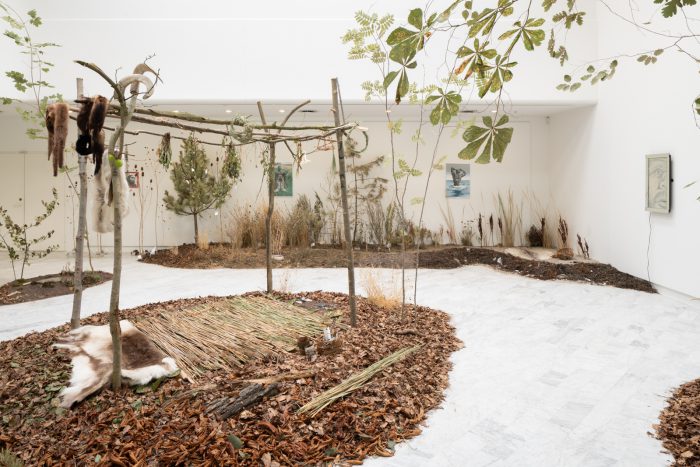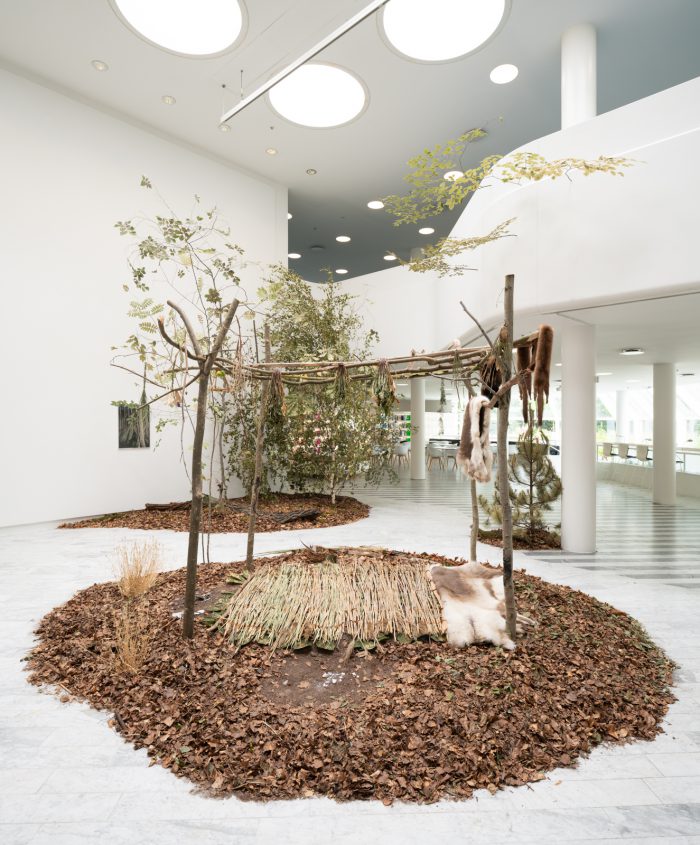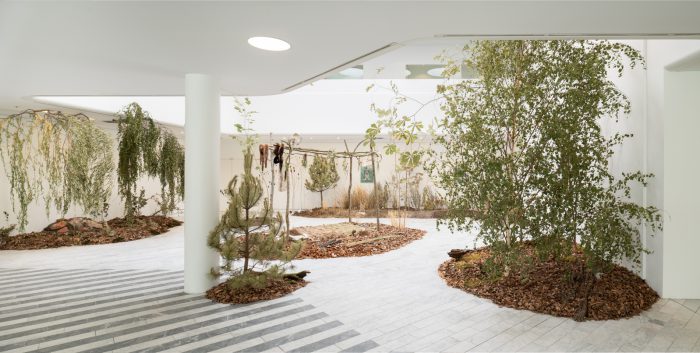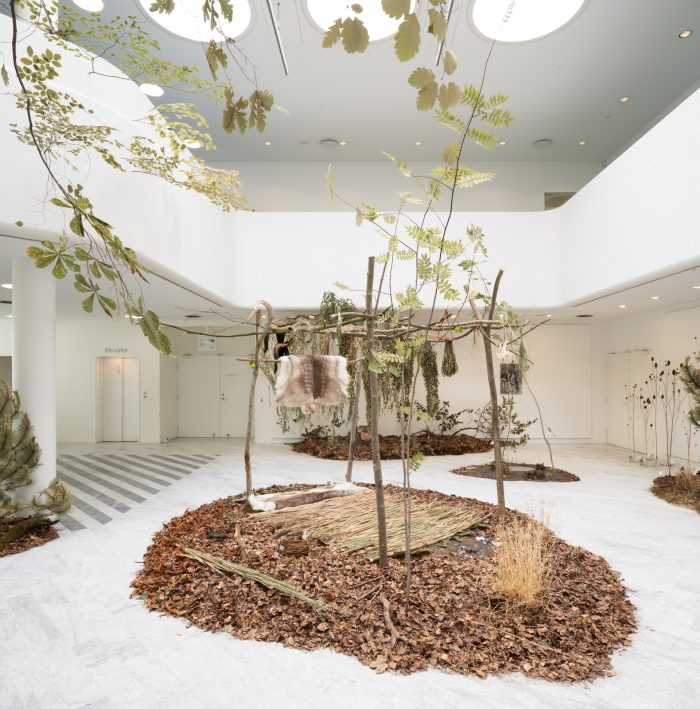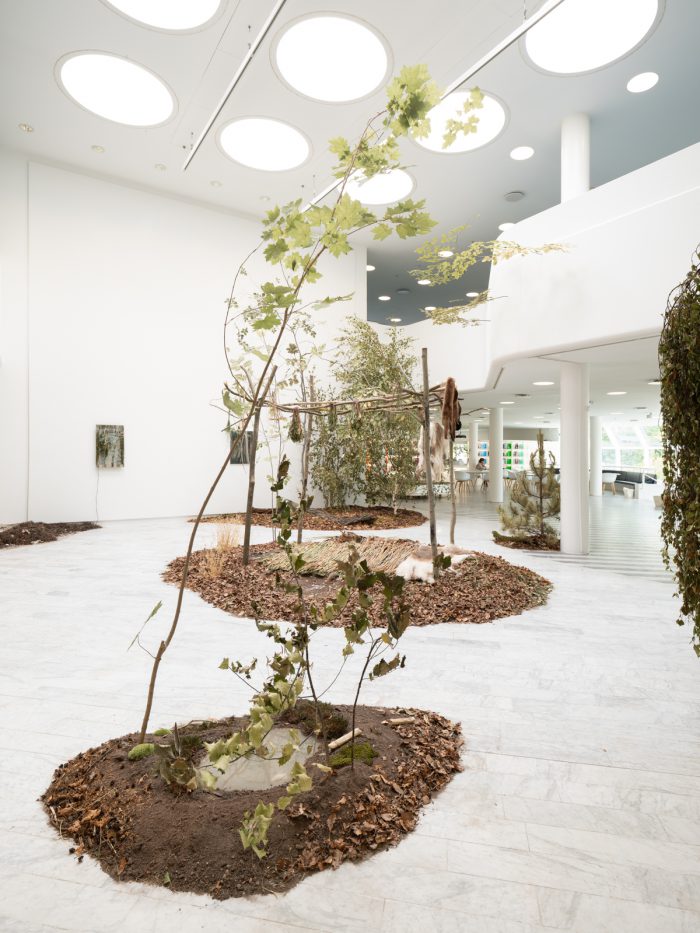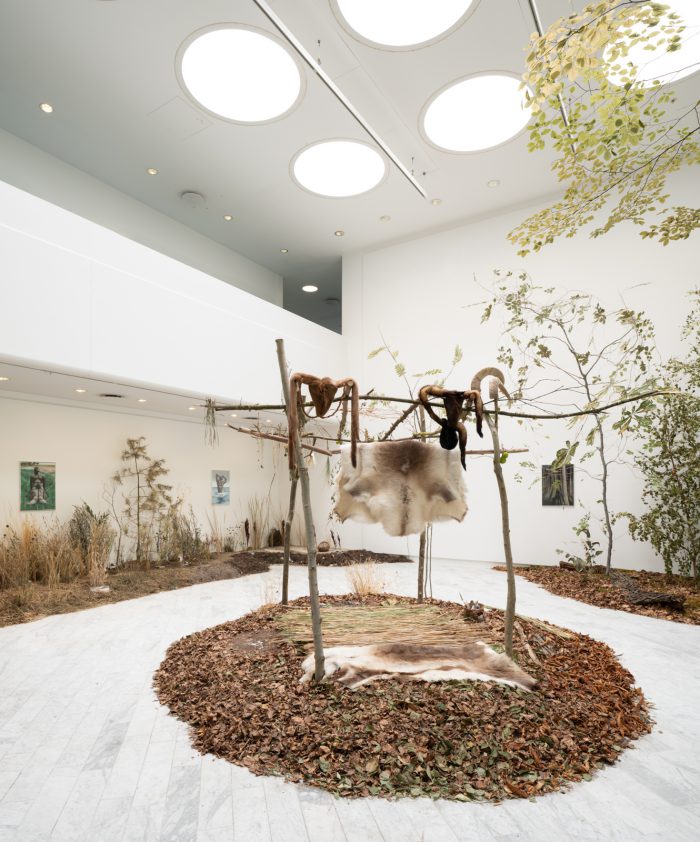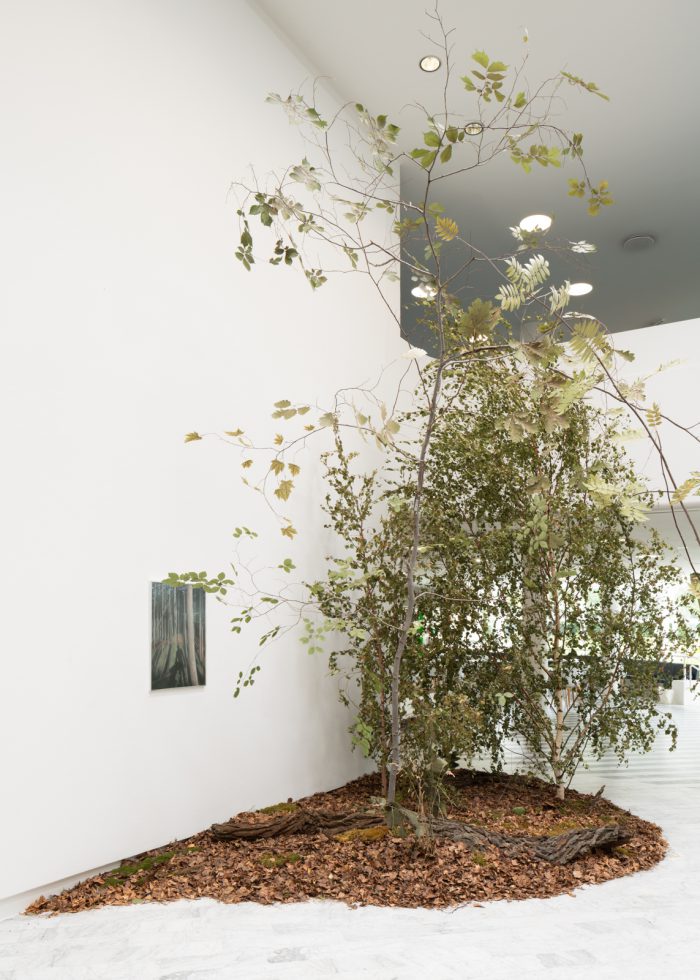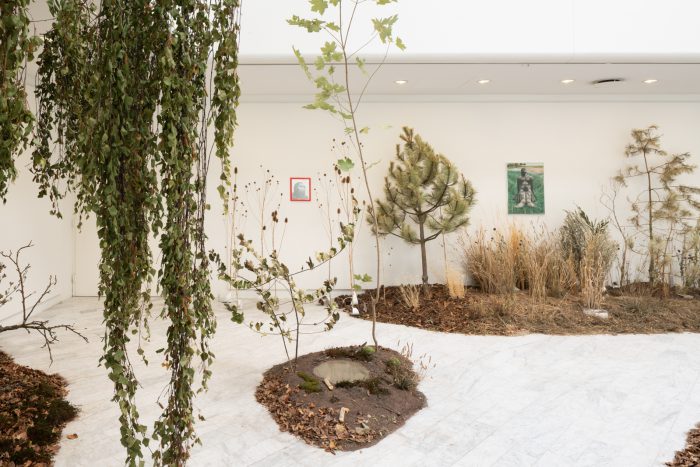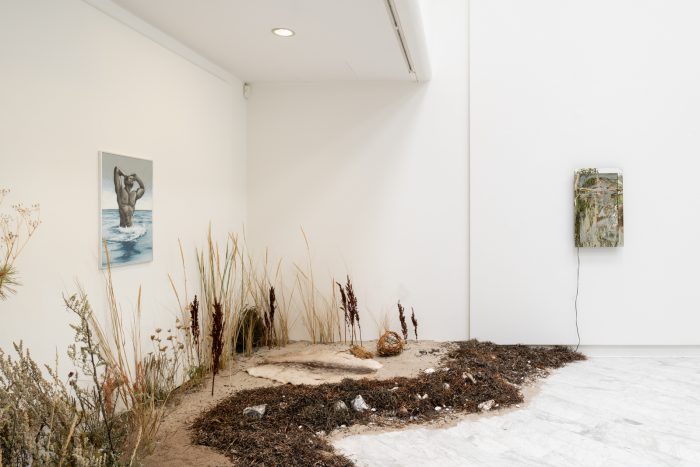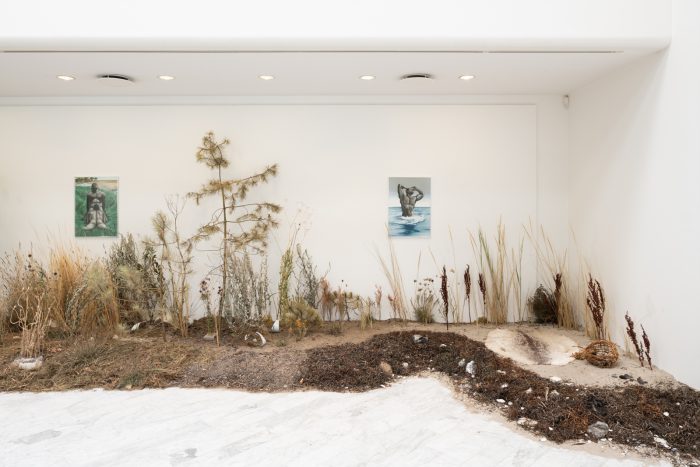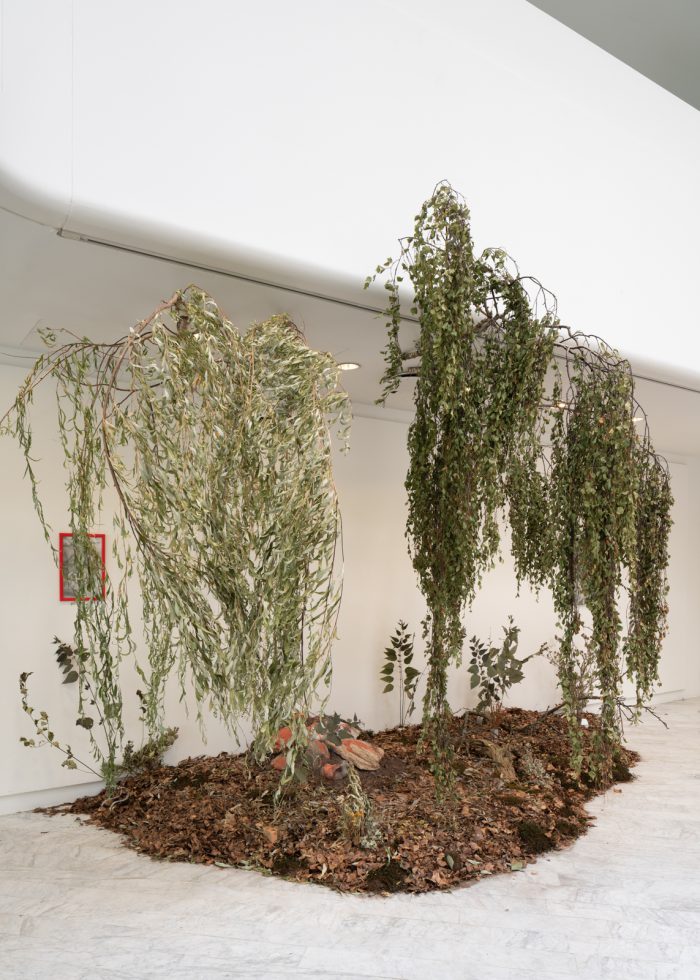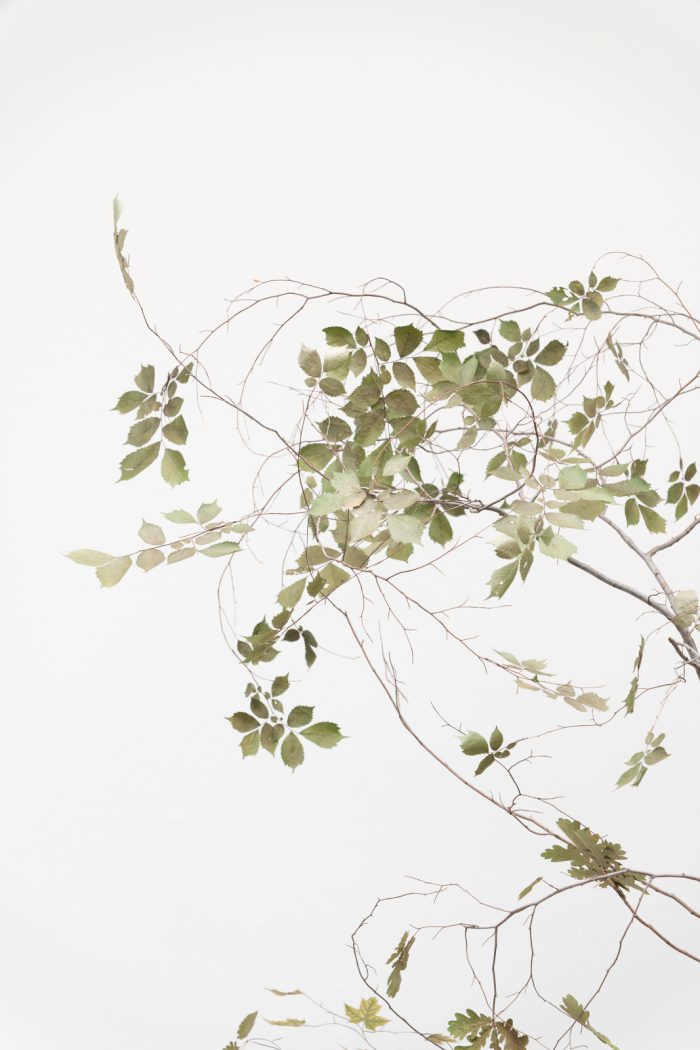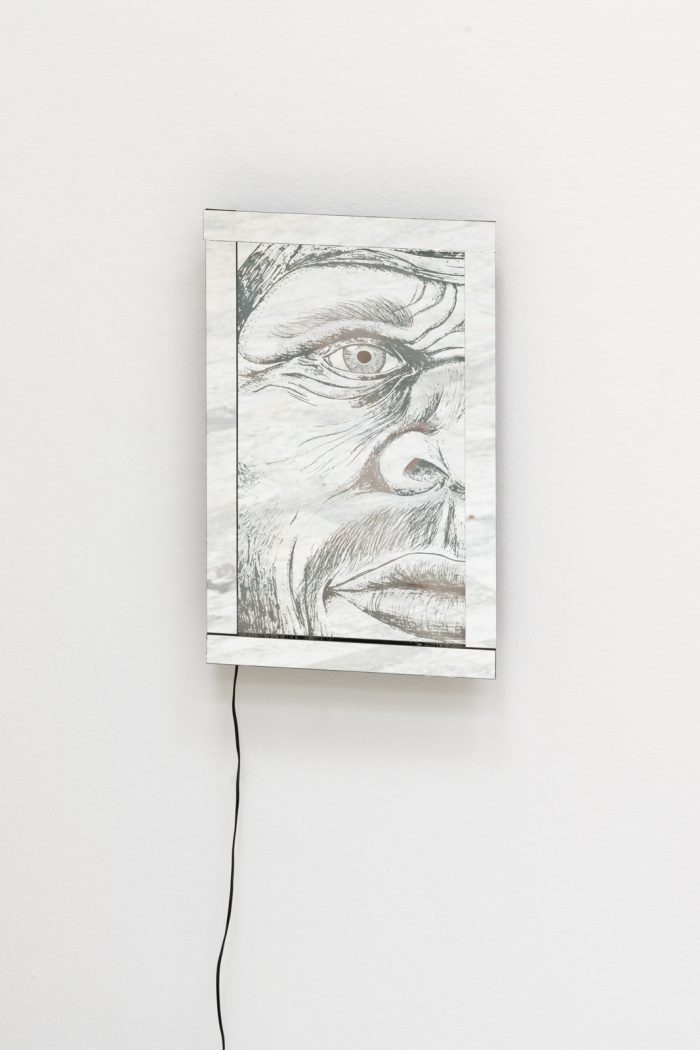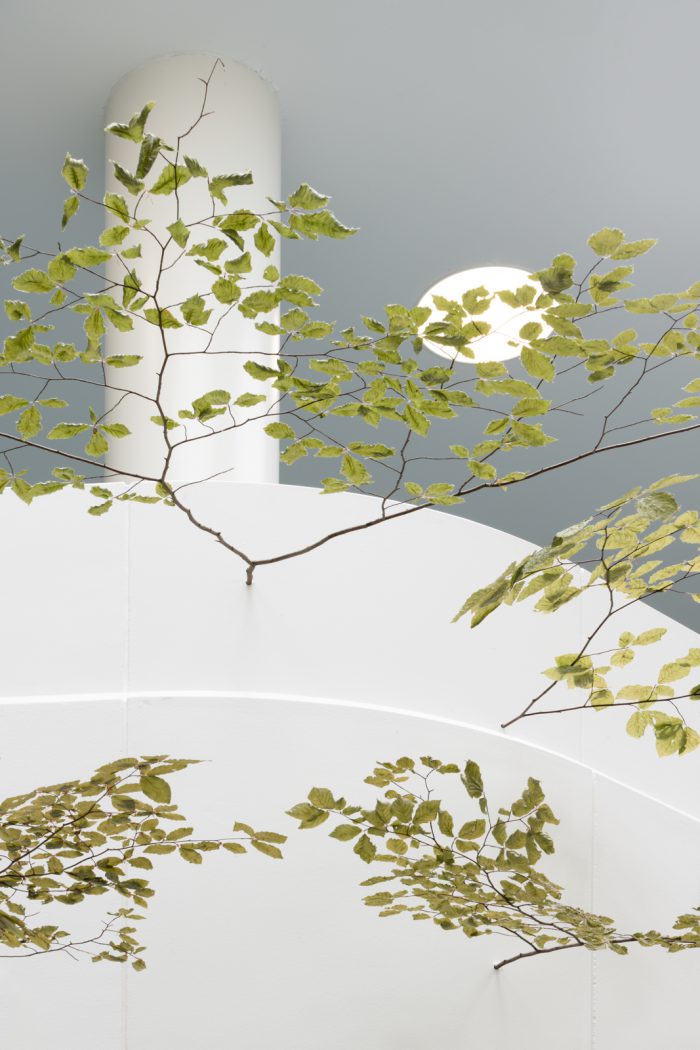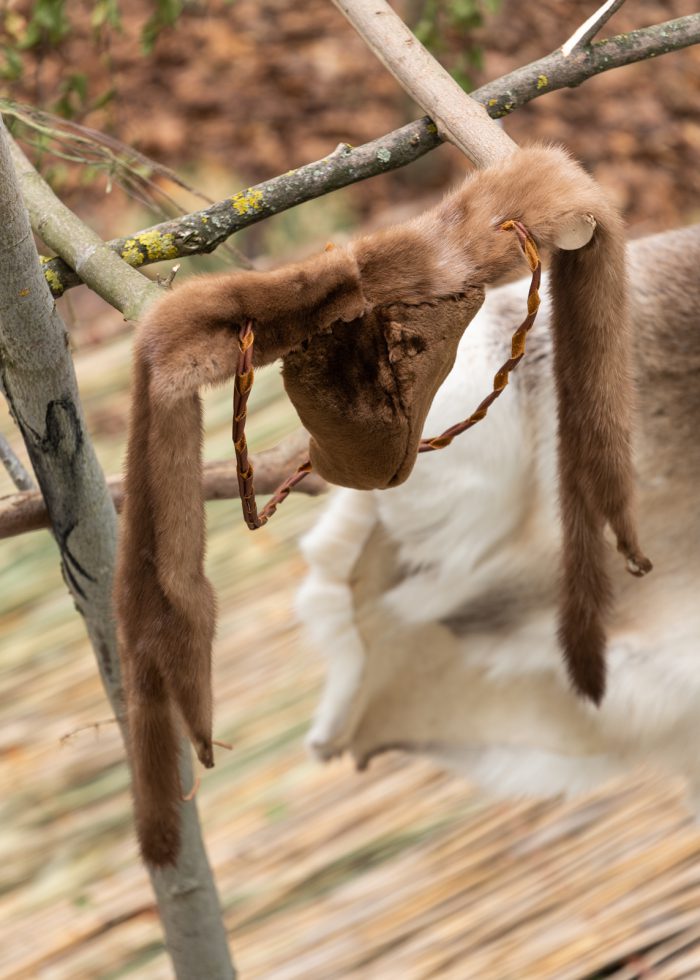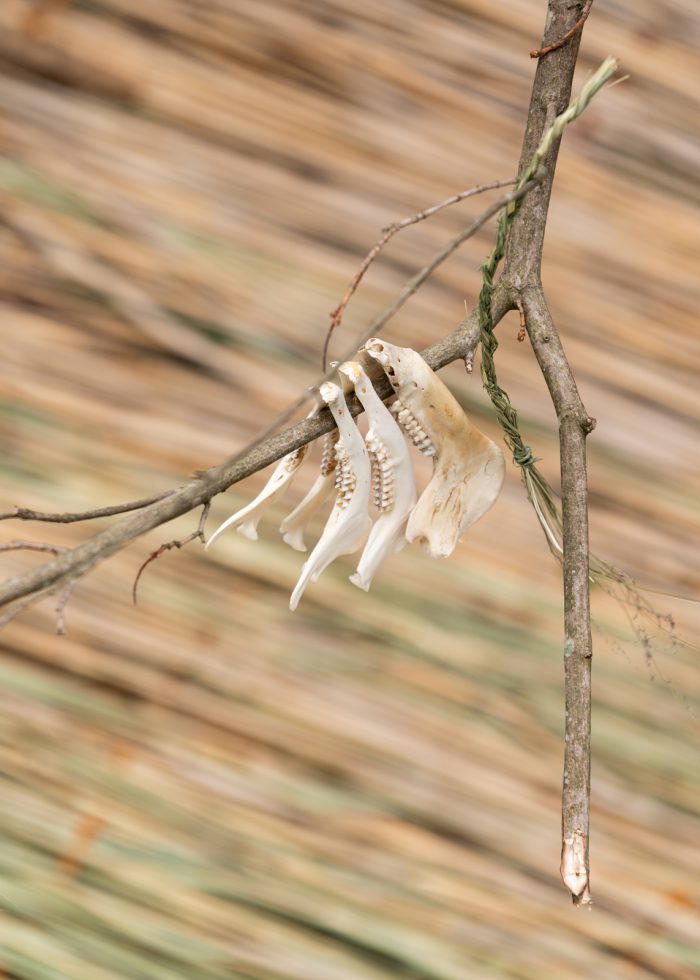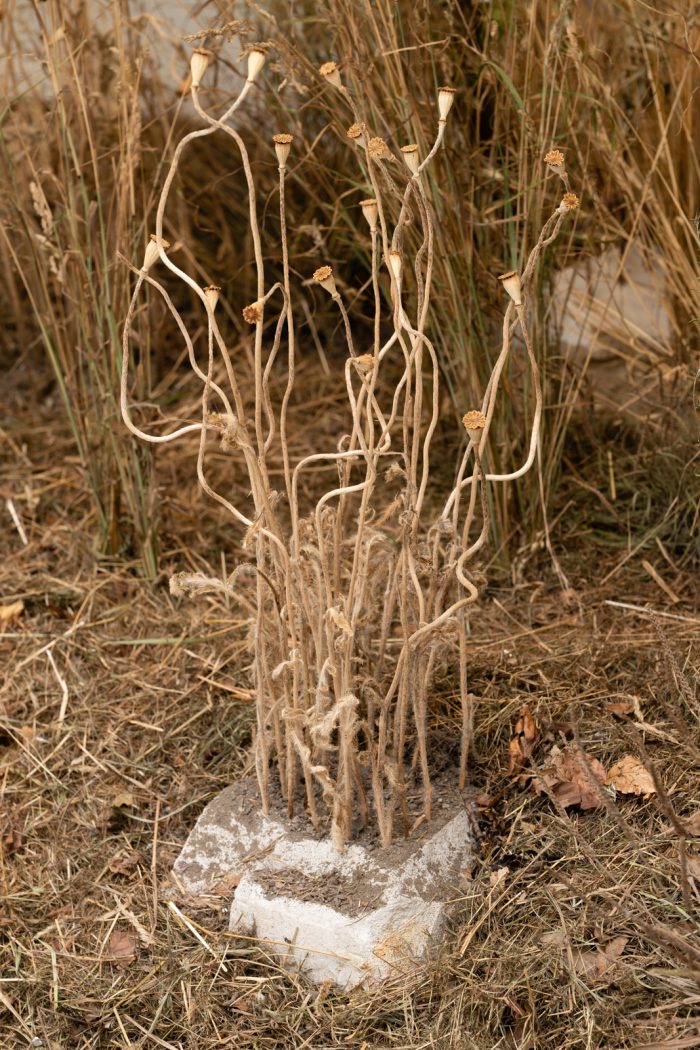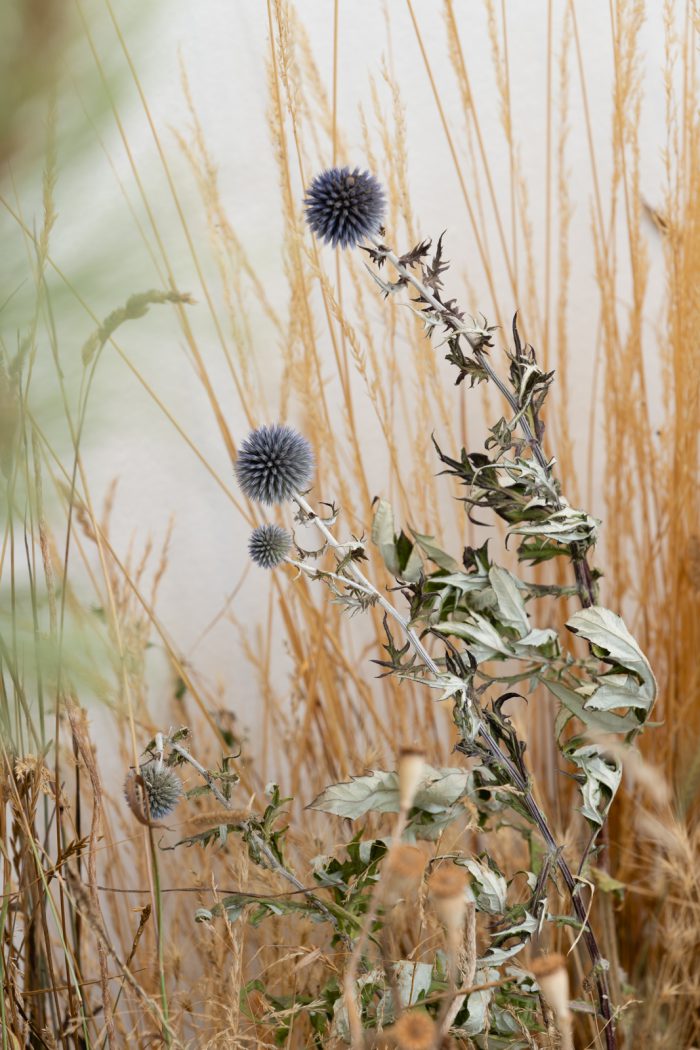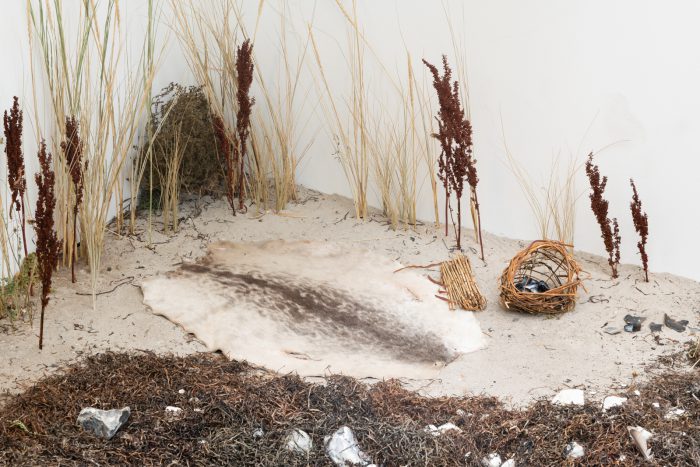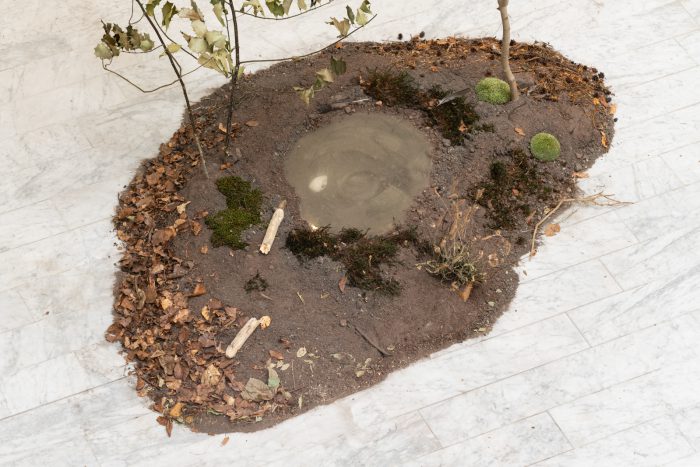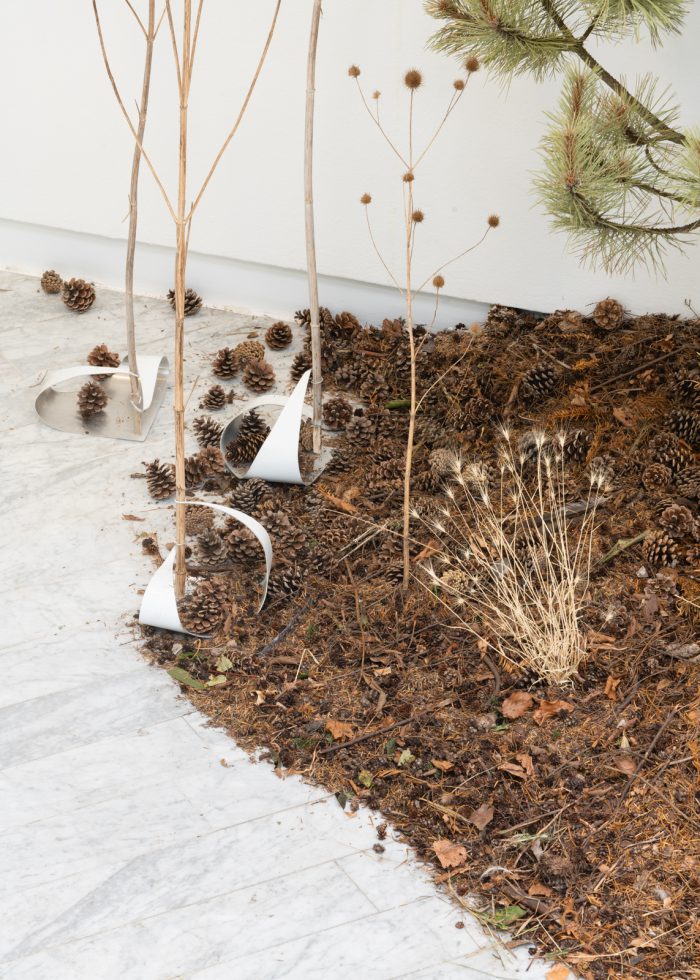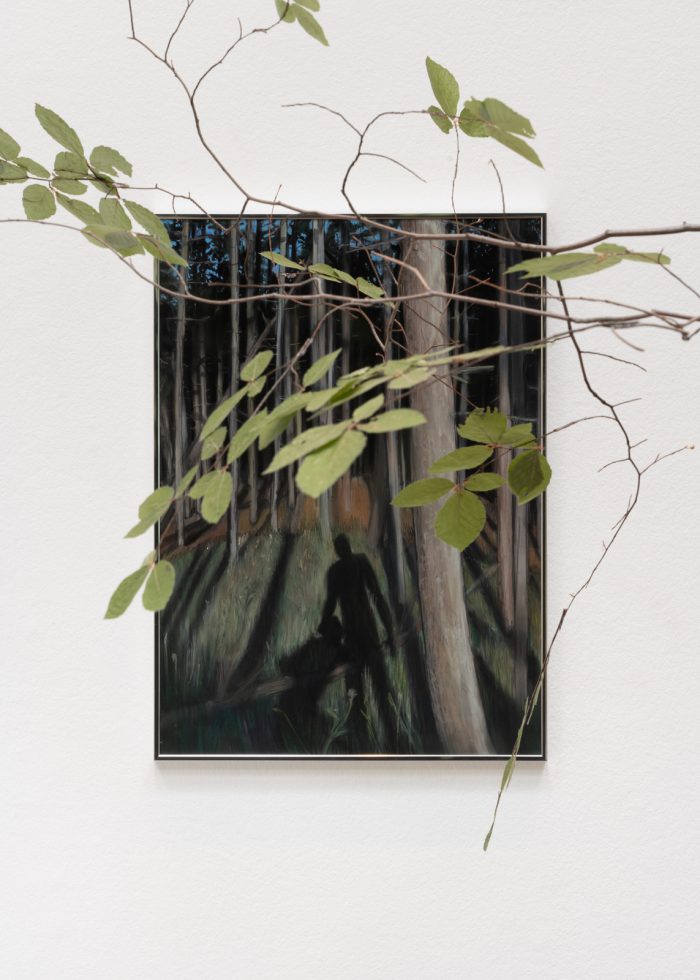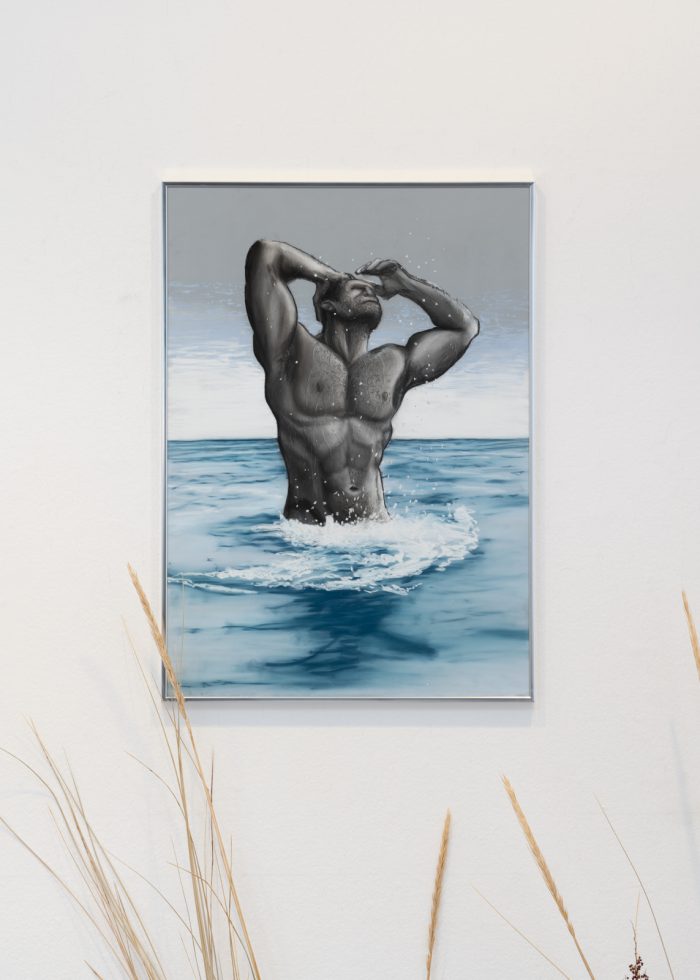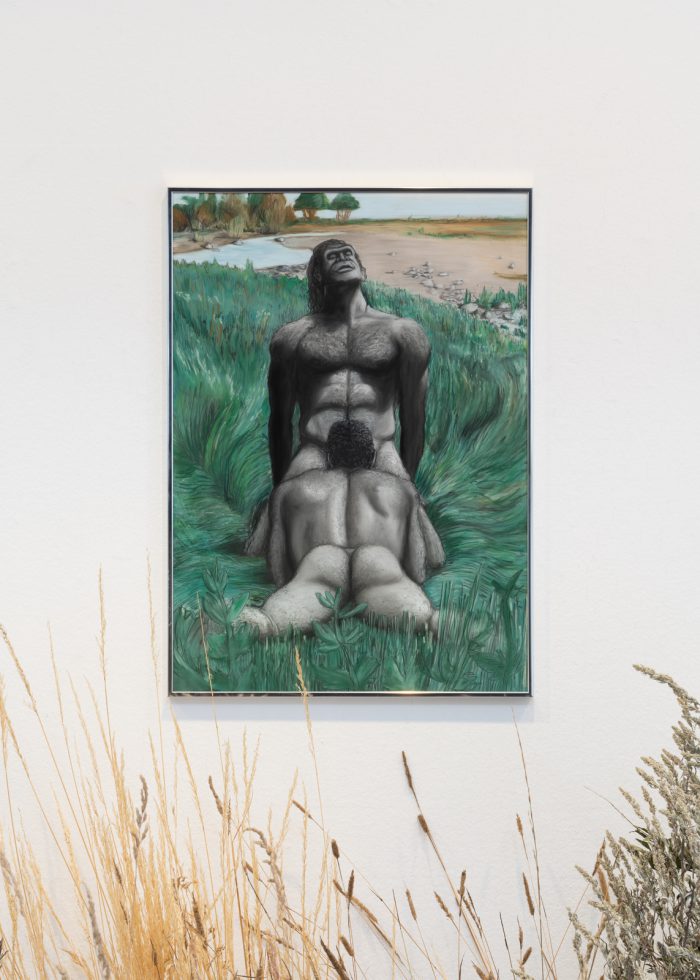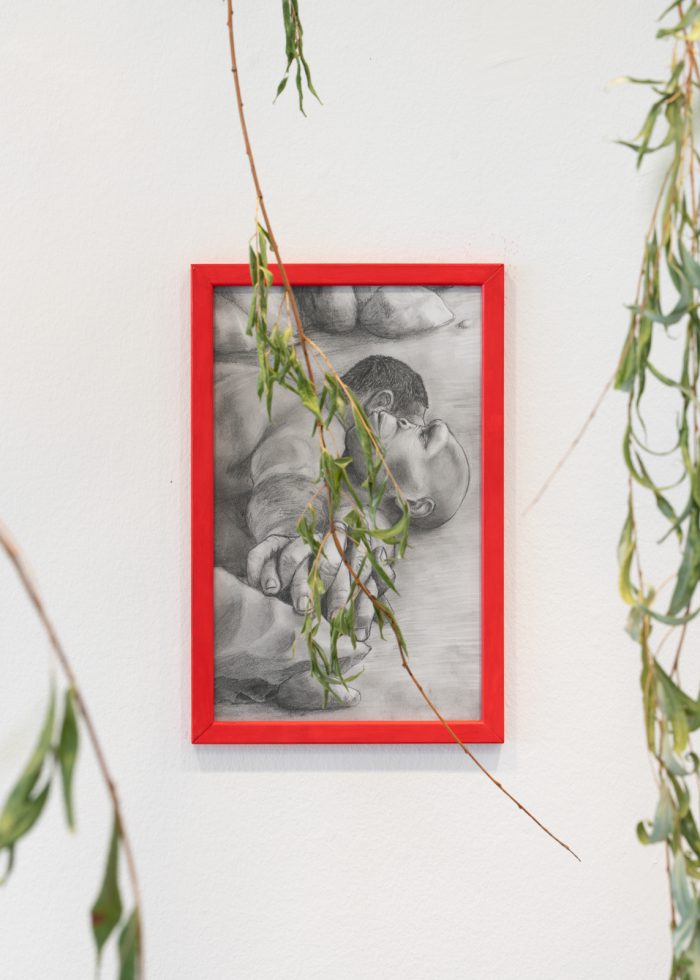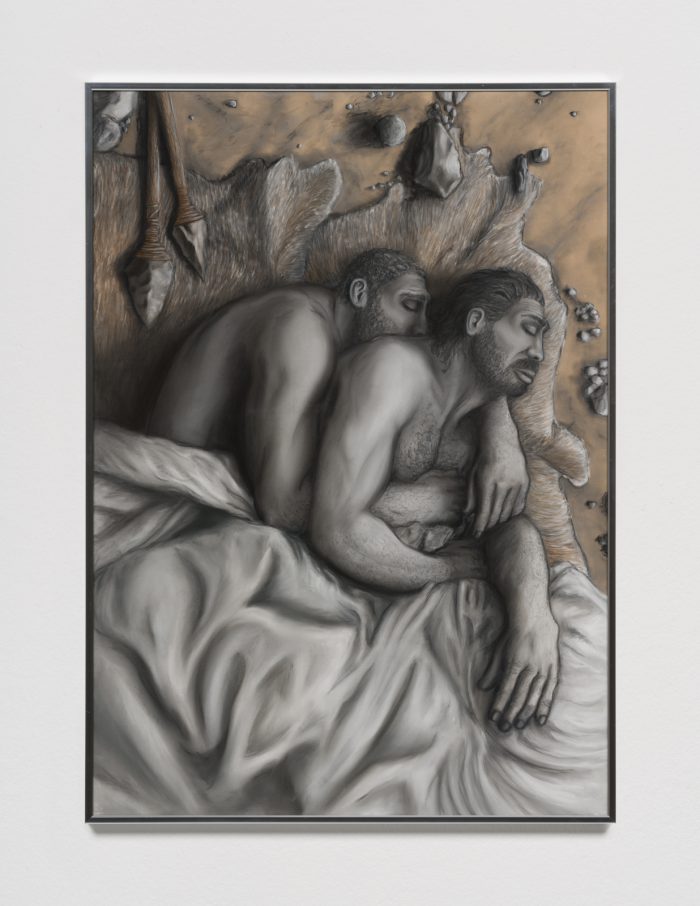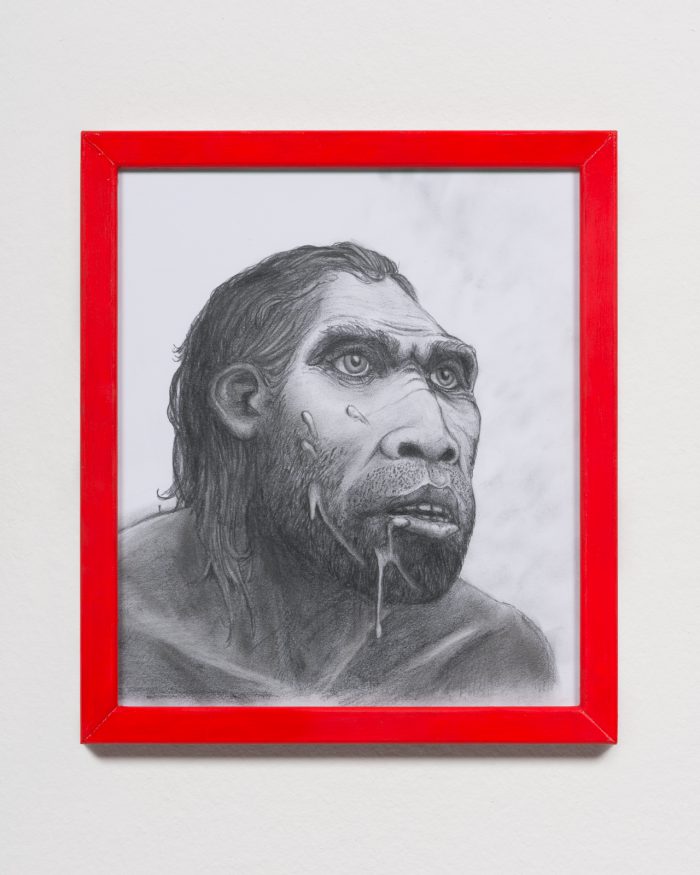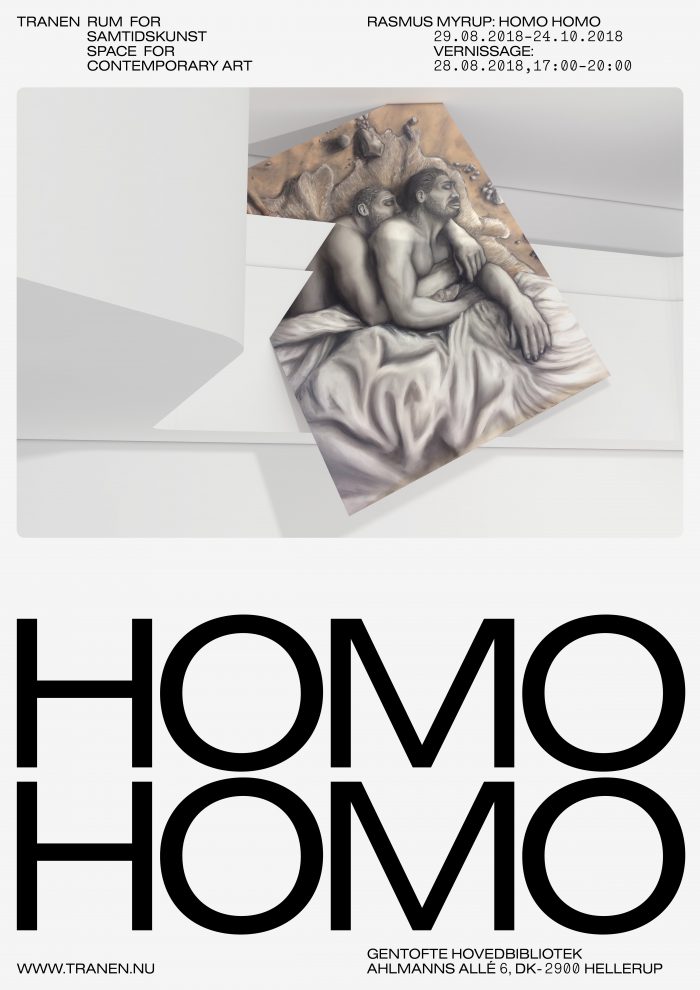Homo Homo på Tranen er Rasmus Myrups største soloudstilling til dato. I en totalinstallation iscenesætter den danske kunstner homoseksualitetens forhistorie blandt abemennesker. Installationen minder om naturhistoriske museers dioramaer, hvor dyr fremstilles i en rekonstruktion af deres naturlige omgivelser. Med Homo Homo rykker Myrup ved formatet. Hovedattraktionen, abemenneskene, er ikke placeret midt i et landskab. Det er til gengæld de besøgende gæster, menneskene, der går rundt i installationen. Hovedpersonerne i installationen, de homoseksuelle abemennesker, har Myrup ikke modelleret men tegnet. De er ophængt på væggene som små vinduer ind til en anden verden. Dioramaets store malerier, der illuderer, at landskabet fortsætter, så langt øjet rækker, er sløjfet. Myrups tegninger af abemennesker forbliver todimensionale billeder. De er afbildet med afsæt i palæontologiske og arkæologiske studier af fortidsmenneskers liv og levned, men værkerne bæres frem af forestillinger og fantasi snarere end forskning. Myrups udstilling tager udgangspunkt i videnskaben og fortsætter, der hvor videnskaben p.t. stopper.
Det oldgræske ord ‘homo’ betyder ‘af samme art’. Det bruges dels som biologisk betegnelse for alle medlemmer af menneskeslægten, dels som forkortelse af tillægsordet ’homoseksuel’. Udstillingstitlen kan derfor oversættes til ’det homoseksuelle menneske.’ Men som kunstneren forklarer kan ’homo homo’ også betyde ’same same’.
Abemenneskene i Myrups udstilling så som homo erectus og homo neanderthalensis synes at gebærde sig ligesom vor tids mennesker. Midt i udstillingen finder man et elskende pars himmelseng bygget af træ og planter fundet i danske skove. I et hjørne af udstillingen har Myrup konstrueret en strandbred og i et andet hjørne et gravsted. Vi befinder os i et stykke dansk natur, der giver sig ud for at været et stykke fortid. Udstillingen er resultatet af kunstnerens spekulationer over, hvorledes tidligere mennesker har elsket, gået ture, holdt i hånd, levet, spist og badet sammen, fremstillet redskaber og billeder og til slut begravet hinanden og sørget over tabet – ligesom i dag.
Ud over homo homoernes karakteristika som flade, brede næsepartier og udstående pandeben og mund fremhæver Myrup lighederne til samtidens mennesker. Det ukendte rummer noget velkendt. Imens hovederne er tegnet med blik for andre menneskearters særtræk, er deres kroppe og positurer inspireret af homoerotisk fotografi og pornografi.
Myrup viser også en kavalkade af egne videoer optaget med smartphone af solnedgange og lignende naturskønne scenerier, som måske har forundret og forført abemennesker til alle tider. Videoerne vises på skærme dækket af spejle. På en og samme tid ser publikum graverede skitser af vores tidligere slægtninge og naturfilm gennem sprækkerne i deres eget spejlbillede. Fortidige og nutidige erfaringshorisonter beriger og skygger for hinanden og smelter sammen.
Blikket på fortiden har til alle tider været farvet af samtiden. De første videnskabelige studier af menneskets dybe fortid i det 19. århundrede afstedkom fremstillinger af andre abemennesker som primitive væsener på lavere udviklingstrin. Myrup er optaget af nyere forskning, fra sin samtid, der afdækker deres ligheder med homo sapiens snarere end forskelle. Ikke blot har genforskere påvist, at homo sapiens har forplantet sig og udvekslet gener med andre homininer. Biologer har også påvist, at homoseksuel aktivitet er udbredt blandt de abearter, der minder mest om homo sapiens. Myrups fremstillinger af lignende aktiviteter blandt uddøde menneskearter er udokumenterede men ikke utænkelige.
Op igennem historien har alt og alle fra græske filosoffer over middelalderlige kirkefædre til moderne lovgivning forbandet og kriminaliseret kærlighed til ens eget køn som contra naturum og altså naturstridig. Med Homo Homo fremstiller Myrup følelser for og tiltrækning af sit eget køn – hvilket i dag er veldokumenteret blandt tusindvis af arter i hele dyreriget – som det mest naturlige i den naturlige verden. Nok redegør evolutionsteorien om arternes udvikling for, hvordan et organ tager form med et særligt formål for øje. Men evolutionsteorien lærer os også, hvorledes arterne udvikler sig, når deres organer bruges til andre formål end de først – af nogen – syntes tiltænkt. Med Homo Homo åbner Myrup for andre, ufortalte historier i naturhistorien.
Homo Homo åbner også Tranens nye program. I 2018 og 2019 vil fokus være på den del af samtidskunsten, som ikke er fokuseret på samtiden. Når alt fra klima til teknologi udvikler sig med stadig højere hastighed, bliver samtiden flygtig og uhåndgribelig. Den skrumper. Til gengæld vokser vor viden om fortiden konstant. Spekulationer om fremtiden tager til. Som del af denne bevægelse er megen samtidskunst ikke længere kontemporær, hvilket bogstaveligt talt vil sige ’med tiden.’ I stedet er den ’ekstemporær’, altså ’ude af tiden.’ På Tranen er det derfor tid til at tænke tid og historie på andre måder.
Toke Lykkeberg
Leder af Tranen
Rasmus Myrup (1991, DK) bor og arbejder mellem København og Paris. Han er færdiguddannet ved det Fynske Kunstakademi i 2018. Han har bl.a. haft soloudstillinger på Galerie Balice Hertling, Paris, og Interstate Projects, New York. Derudover har han siden 2014 kurateret en lang række udstillinger i bl.a. København, London og Paris med sin udstillingsplatform Weekends.
Homo Homo is Rasmus Myrup’s biggest solo exhibition to date. In a full scale installation the Danish artist stages the prehistory of homosexuality amongst hominins. The installation recalls the dioramas of museums of natural history where animals are displayed in a reconstruction of their natural environment. In Homo Homo Myrup reworks the format. The main attraction, the hominins, are not placed in the centre of a landscape. It is rather the visitors, the humans, walking around in the display. The main characters of the installation, the homosexual hominins, have not been modeled by Myrup, but drawn. They are hung on the walls like windows to another world. The artist has discarded the big diorama paintings of landscapes that stretch as far as the eye can see. Myrup’s drawings of hominins remain two dimensional images. Though they take paleontological and archeological studies of prehistoric people’s life and strife as a starting point, the works are ultimately imaginings and fantasy rather than science. Myrup’s exhibition is informed by current research, but takes up where science leaves off.
The Ancient Greek word ‘homo’ means ‘of same species’. It is used both as a biological description of all members of the human genus and as an abbreviation of the adjective ‘homosexual’. The exhibition title can therefore be read as ‘the homosexual human’. But, as the artist explains, ‘homo homo’ can also mean ‘same same’.
The hominins in Myrup’s exhibition such as Homo Erectus and Homo Neanderthalensis seem to act like humans of our time. In the center of the exhibition, we find a four-poster bed shared by two lovers, built with wood and plants found in the forests of Denmark. In a corner of the exhibition Myrup has constructed a seashore and in another a grave. We find ourselves in a piece of Danish nature posing as a piece of prehistory.
The exhibition is the result of the artist’s speculations on how previous humans have loved, strolled, held hands, lived, eaten and bathed together, produced tools and imagery and finally buried each other and mourned their loss – just like today.
Besides the characteristics of the homo homos such as flat, wide nose ridges and protruding forehead arches and mouths, Myrup enhances the likeness to humans of today. The unknown contains something well known. While the heads are drawn in reference to the facial features of foregone folks, the bodies and their positions are inspired by homoerotic photography and pornography.
Myrup also shows a stream of his own videos, captured with a smartphone, with sunsets and similar scenes of natural beauty, which may have surprised and seduced hominins throughout the ages. The videos are displayed on screens covered by mirrors. The public simultaneously behold etched sketches of our ancient ancestors and nature clips through the cracks in their own reflection. Prehistoric and present horizons enrich and obscure each other and merge.
Our perception of prehistory has always been produced by the present. The first scientific studies of the antiquity of humanity in the 19th century conceived of other hominins as primitive, underdeveloped beings. Myrup looks to more recent research focusing on their similarities to Homo Sapiens rather than their differences.
Not only have geneticists proved Homo Sapiens have bred and exchanged genes with other hominins. Biologists have also proven that homosexual behavior is widespread amongst the species of living apes most akin to Homo Sapiens. Myrup’s presentations of similar activities amongst extinct humans are undocumented but not unlikely.
Throughout history everything and everyone from greek philosophers to medieval clergymen to modern legislation have cursed and criminalized the love of one’s own sex and gender as contra naturum and therefore unnatural. With Homo Homo Myrup shows feelings for and attraction to his own gender, as the most natural thing in the natural world; something by now well documented amongst thousands of species throughout the animal kingdom.
The theory of evolution might explain how a body part, an organ, takes form so as to serve a specific purpose. But the theory of evolution also teaches us how species evolve when their body parts are used for other purposes than they at first – to some – seem destined for.
Homo Homomarks the beginning of Tranen’s new program. In 2018 and 2019, focus will be on contemporary art that is not primarily focused on our contemporary condition. When everything from climate to technology evolve at ever greater pace, the present becomes ephemeral and intangible. The present starts to shrink. Meanwhile, our knowledge of the past increase. Speculations about the future abound. As part of this development, much art is no longer contemporary, which literally means ‘with time.’ Instead art is rather ‘extemporary, i.e. ‘out of time’. Accordingly it’s time to think differently about time and history at Tranen.
Toke Lykkeberg
Director of Tranen
